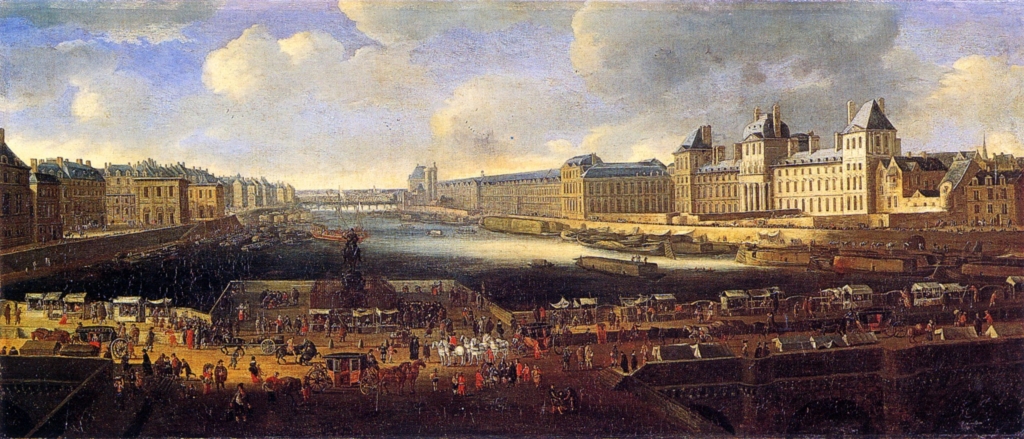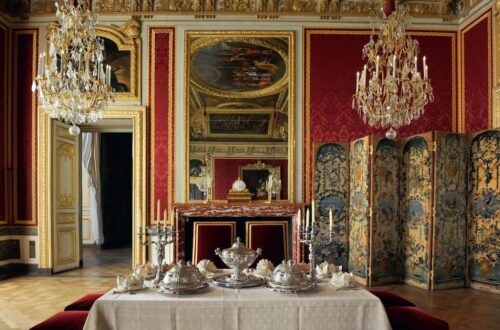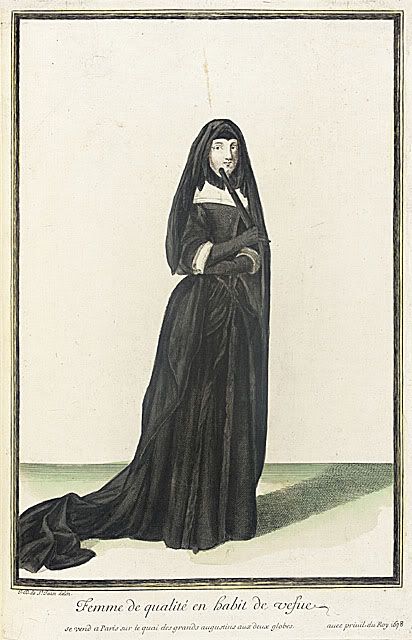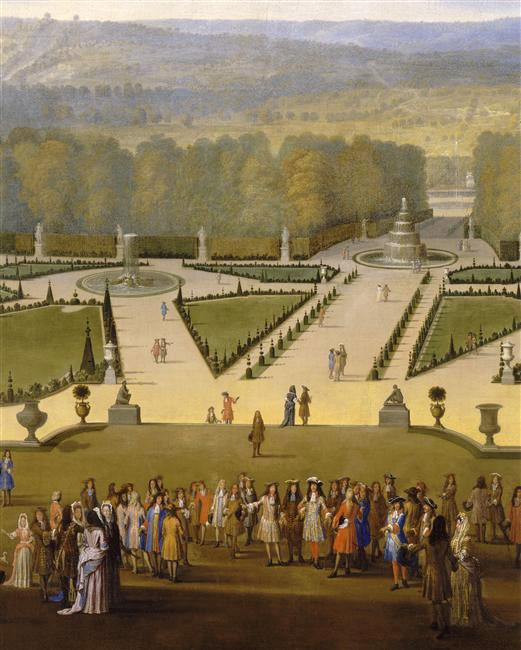Les Honneurs du Louvre
To distinguish higher ranking nobles from lower ranking ones, there was something called Les Honneurs du Louvre at Louis XIV’s court. As the name hints, it had its origins in the Louvre and consisted of specific privileges that made it very clear to everyone else that the person who had Les Honneurs du Louvre was somewhat important to King and Kingdom.

This set of privileges was granted by the King himself and not everyone could get it. It was limited to the Princes du Sang, who were related to the King, to the Princes Ètrangers, who were related to foreign sovereigns, to the Peers of France, to the Great Officers of the Crown, to the Marèchals de France, to Cardinals and to the Grandees of Spain after 1705. Also the Dukes the exiled James II of England created in France were given those privileges along with some nobles, mostly from Peer families. (The Ètrangers also had other privileges that were just for them.)
Although being called Les Honneurs du Louvre, the whole thing was not just limited to the Louvre, but included every royal residence and also those of the royal family. It formed a clear distinction between the old and the new nobility and was something a mere Marquis could only dream of.
As someone who had the Honneurs du Louvre, one was entitled to remain in the carriage all the way to the inner courtyard of a palace, the rest had to get out at the first gate already and walk the rest of the way or hire a sedan chair. If you ever went to Versailles, you are probably aware what a hassle it can be to walk from the outer gate all the way up. Imagine to do that in full heavy court-dress with fashionably high-heeled shoes, while trying to look as graceful as possible.
One also had the right to fly one’s coat-of-arms on velvet fabric on the carriage. But only on carriages owned by the noble in question, it did not apply to rented carriages. Thus when a holder of Les Honneurs du Louvre approached Versailles, they were jealously ogled by all those who had to walk and the walkers knew exactly who just drove past.
The set of privileges also included to kneel on a cushion during mass, which could last for long hours. The honour to be seated in the presence of the Queen and to be called cousin by the King. During court ceremonies, those with the Honneurs were the ones who were entrusted with the most prestigious tasks.





2 Comments
Miles McGrath
Would dukes who were not peers also be granted the honours of the Louvre as well?
Aurora von Goeth
One could be a duke, but not a peer and still have the honours, because one was a Marèchal or held one of great offices.